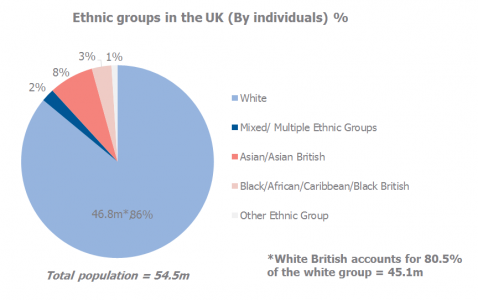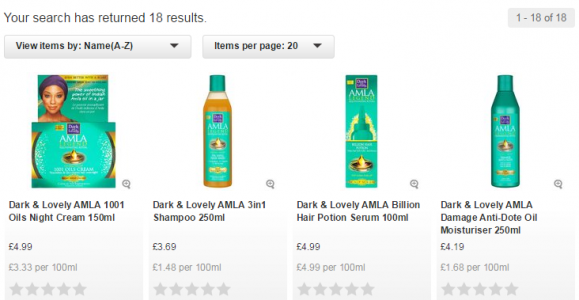It is well known that we live in one of the most diverse countries in the world.
Over 300 different languages are spoken in London schools (source: BBC Languages) and 14% of the UK population is made up of ethnic minorities (source: ONS Census). A figure that is significant and planned to increase by 35% by 2035. It’s estimated that, by 2016, half the ethnic population will be under 12 whereas half of the White British population will be under 40.
Source: ONS/OMD INSIGHT
Not only are they a size that no marketer nor communicator can ignore, they also have a significant purchase power. According to the IPA, ethnic groups are estimated to have a disposable income of £300 billion a year altogether, making them a strong segment that we cannot overlook.
The IPA goes further and states that an average British Indian man has a higher income than an average White British man, and Asians represent 10% of the richest people in the UK.
This disposable income is used for consumption. As an example, an Afro-Caribbean woman is reported to spend six times more than other ethnicities on beauty products, but when looking at beauty stores, there are only a few products targeting them.
For example, Superdrug’s online store offers 366 different shampoos and only 18 of them are categorised as ‘ethnic haircare’ (for Asian or African hair essentially) showing that mainstream retailers don’t tap into this opportunity enough.
The figures above highlight the differing consumption habits and profiles of ethnic groups; showing only marginally the great opportunity that exists in targeting them.
When looking at media consumption, we can see a few singularities too.
According to research done by OMG Ethnic, the multicultural consultancy of Omnicom Media Group, 60% of the people from ethnic backgrounds switch between mainstream channels and ethnic programmes. An example that shows that even if those groups are integrated to the British culture, they still keep a link with their own.
Most importantly, it is also proof that specific targeting is needed to reach these individuals.
When asked by the IPA, 60% of ethnic audiences surveyed said they would be more likely to buy a product if it was advertised in their media and as an example, 77% of British Asians surveyed feel mainstream advertising has no relevance to them (Source: The New Britain, IPA).
So when looking at all those figures, why do only one in twenty ads feature an actor from an ethnic minority and why don’t advertisers put more budget into targeting these groups?
One of the main reasons lies in past mistakes and the public uproar they have created.
For example, in a Popchips advert, Ashton Kutcher plays a Bollywood producer named Raj donning brown face paint and a fake black moustache, speaking with an Indian accent. It went viral for the wrong reasons as people were scandalised by how stereotypical this TV spot was.

The ad was removed a few hours later and Popchips’ CEO asked to apologise.
In the UK, two examples include a British snack maker who launched a ‘Spicy Jalfrezi’ edition featured in a packaging full of sacred Hindu OM symbols and a Telecoms provider who advertised in a right-wing Indian newspaper its offer for calls to Pakistan…
A few catastrophes that illustrate how ethnic marketing needs to be subtle and clever, just like any other targeting.
By researching them, being aware of their needs, lifestyles, media consumption and expectations; marketers and advertisers can score great points.
TK Maxx understood this very well as after discovering that one in five of their customers were Asian, they decided to launch a gift card for the Hindu Diwali Festival. Marks & Spencer launched their ‘Nearly Naked’ bras in four skin tones after analysing the skin colours of over 1000 consumers.
These success stories are still all too rare, which makes this type of targeting a great opportunity to explore and grow audiences in a way that feels both inclusive and personal.





